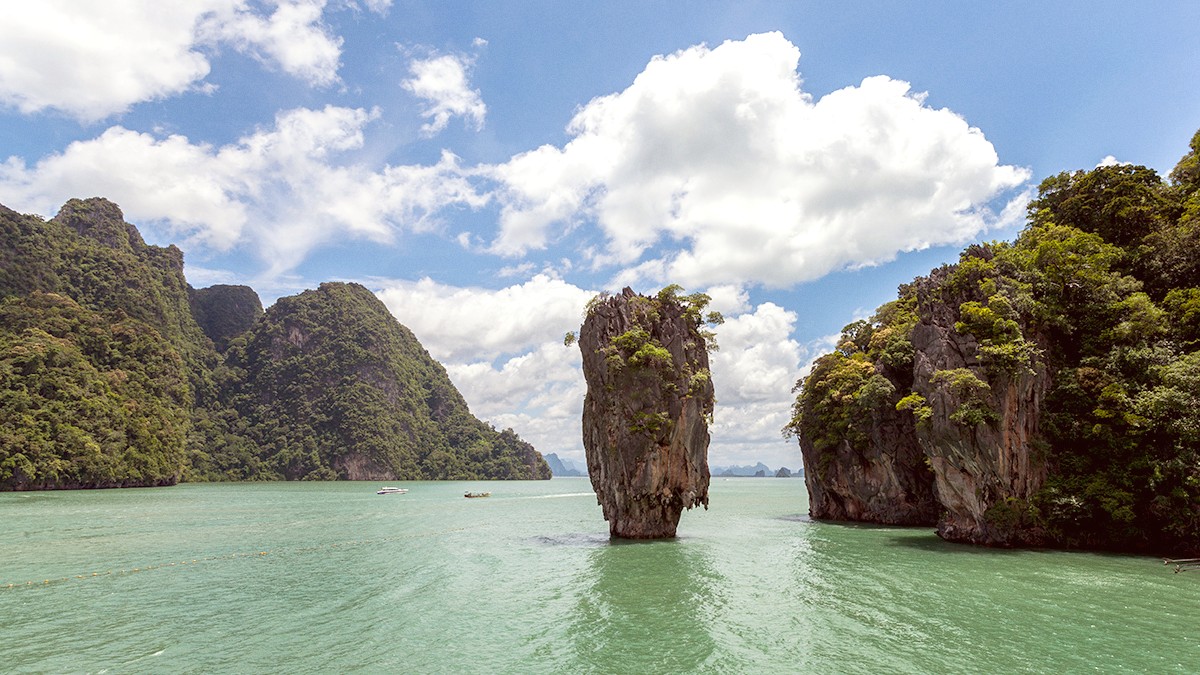
Ubon Ratchathani Province, Thailand
This temple is a striking landmark, noteworthy for its gleaming white and gold chedi. The chedi is a precise replica of the Mahabodhi Temple in Bodh Gaya, India.
The temple looks especially impressive during sunset hours when its golden accents catch the fading light, creating a beautiful glow. It marks a deep connection to Buddhist origins.
This central park functions as the green lung and recreational heart of Ubon Ratchathani. It is a favored spot for locals for exercise, relaxation, and social gatherings.
Within the park, find the Ubon Ratchathani City Pillar Shrine (San Lak Mueang), a sacred site housing the city's guardian spirit, representing the city's spiritual foundation.
This temple is considered a powerful artifact and spiritual cornerstone.
Displays include significant Dvaravati and Khmer artifacts from ancient civilizations.
Find traditional Isaan tools, agricultural implements, and local textiles, showing daily life.
Look for intricately carved sandstone lintels and Buddha images from the Dvaravati period. Textile displays are very interesting.
The museum building once served as the provincial hall, adding to its historical context.
This museum is a treasure trove for regional history.
Beyond the city, Ubon Ratchathani's surroundings present historical sites that connect to ancient civilizations and spiritual practices.
Famous for prehistoric rock paintings, dating back an estimated 3,000-4,000 years, depicting daily life, fishing, and animals.
The park offers stunning cliff-top views of the majestic Mekong River and Laos, a dramatic backdrop to the ancient art.
Open daily, 8:00 AM to 4:30 PM. Entrance fee (400 THB for foreigners, 200 THB for children).
A highly respected forest meditation monastery, founded by Ajahn Chah. A serene and austere environment for meditation and Dhamma study.
Not a typical tourist attraction, but a place for genuine spiritual contemplation and learning about the forest monastic tradition.
Open daily; entry is free. Dress respectfully (modest, often white clothing) and observe monastic rules, especially silence.
Wear comfortable shoes for walking trails. Best visited in cooler months for outdoor exploration. Combine with Wat Sirindhorn Wararam Phu Prao.
These sites are generally outside the city center, so dedicated transport (car, motorbike, or tour) is often needed.
The historical sites offer unique photographic opportunities. Respect signs regarding photography.
Ubon Ratchathani's natural landscape features rivers, waterfalls, and unique geological formations.
Rapids and rock formations on the Mun River, very visible during the dry season (around April-May) when water levels are low. A popular local picnic spot.
An unique waterfall where water flows through a natural rock arch, creating a stunning effect resembling a moonbeam. Best seen after the rainy season for strong flow.
The confluence of the brown Mekong River and blue Mun River. The distinct color difference is a fascinating natural phenomenon, observed best from viewpoints in Khong Chiam, especially during the dry season.
For Kaeng Saphue and Two Color River, the dry season (Nov-May) offers the clearest views of exposed formations and distinct water colors.
Book excursions on GetYourGuideSaeng Chan Waterfall is most impressive right after the rainy season, when water levels are high, creating a strong flow through the arch.
Consider hiring a local boat for a closer look at the Two Color River confluence for a different perspective.
Wear appropriate footwear for exploring rocky areas and trails near these natural attractions.
Help keep these beautiful sites clean by carrying out all your trash and sticking to marked paths.
Often called the "Temple of Glowing Trees," this temple is near Pha Taem National Park. It features remarkable murals on the back of its ubosot (ordination hall) depicting trees.
Situated on the Mekong River, this area boasts intricate rock formations and thousands of potholes carved by the river's erosion. The landscape compares to a "Grand Canyon."
When exploring Ubon Ratchathani's temples and sacred sites, dress modestly covering shoulders and knees. This displays proper respect.
Always carry water, especially during warmer months, and use sun protection. Be aware of your surroundings, especially in crowded market areas.
Keep national parks clean. Stick to marked trails. Do not disturb wildlife or natural formations.
Capture the beauty, but be mindful of signage regarding photography in certain areas, especially inside temples or sacred spaces.
For sites outside the city, consider hiring a private car, a local taxi, or joining a guided tour for convenience.
For national parks or guided tours to remote sites, consider booking in advance, especially during peak season.
Platforms like GetYourGuide can assist with attraction ticket booking and local excursions, ensuring a smooth visit.